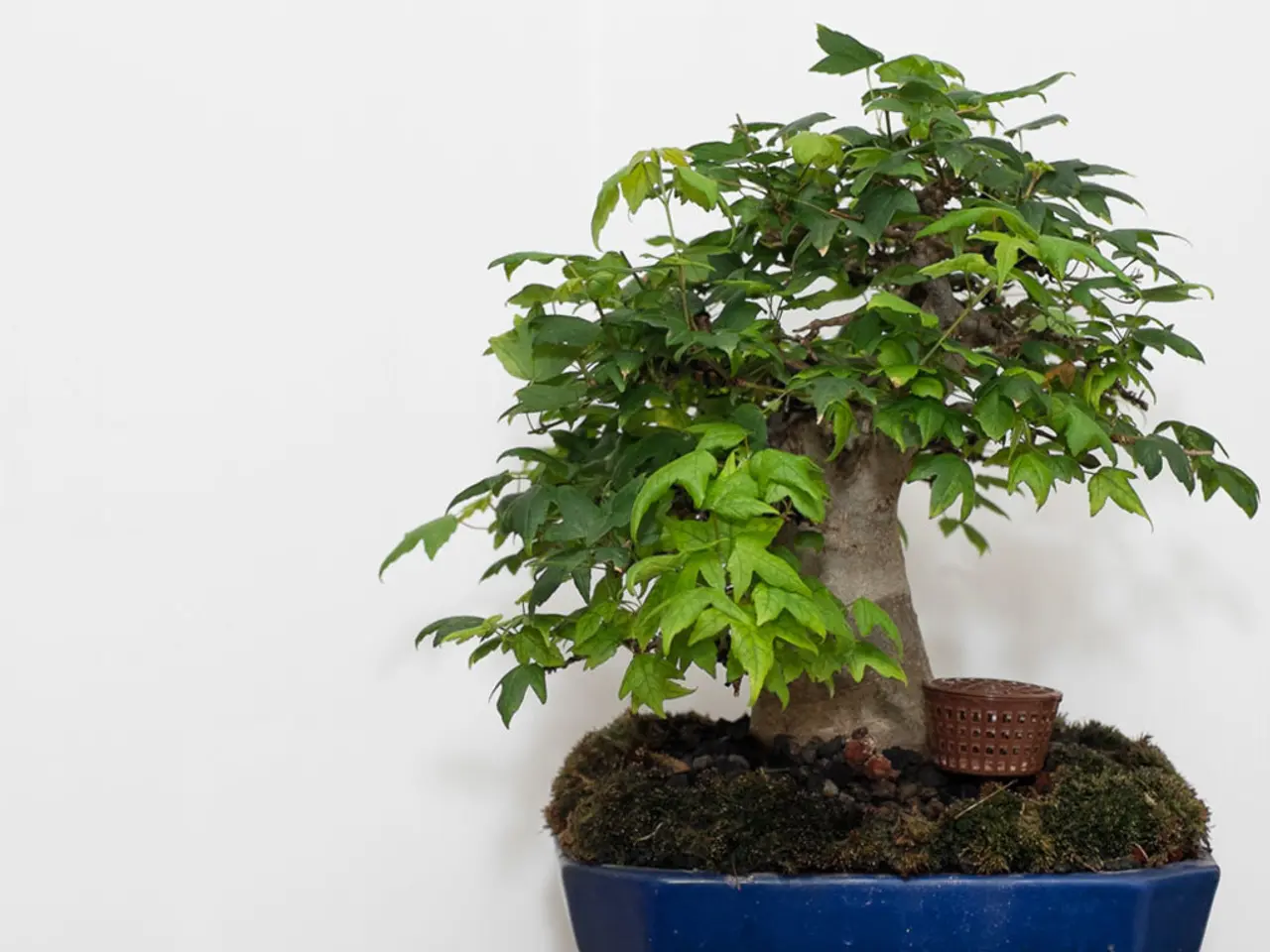Enhancing Movement and Balance in Literati Bonsai through the Use of Inclinature
In the world of bonsai, the technique of inclinature in Literati bonsai stands out as a unique and captivating art form. This practice, where the trunk is deliberately slanted or curved in an elegant, often sparse manner, imbues the tree with a sense of movement and emotional depth.
Appearance
The graceful, slender form of an inclinatured Literati bonsai is a sight to behold. The slender, often elongated trunk bends and twists with a sense of movement and flow, breaking away from the rigid, upright posture common in other bonsai styles. This design introduces dynamic asymmetry and interesting negative space around the tree, enhancing its aesthetic appeal by making the silhouette more intriguing and less static.
Moreover, the angled trunk mimics trees in nature that have grown under harsh conditions—bent by wind, snow, or competition for light—giving the bonsai a natural, aged, and wise appearance.
Emotional Resonance
Beyond its visual appeal, inclinature in Literati bonsai resonates on an emotional level. The contorted, often sparse trunk can symbolize struggle and survival against adversity, inspiring feelings of endurance, quiet strength, and resilience.
The inclining trunk evokes a sense of refined beauty and minimalism, aligning with the Literati bonsai’s philosophical roots, emphasizing subtlety and understated sophistication. The design invites the viewer to imagine stories of the tree’s life journey—windstorms weathered, spaces navigated, and seasons endured—creating a meditative or contemplative mood.
The Technique
Crafting an inclinatured Literati bonsai is a meticulous process. The delicate balancing act of wiring and guying for support requires a deep understanding of the tree's structural limits. Carefully calibrating branch angles influences visual weight distribution and placement, ultimately affecting the overall harmony of the design.
Harmonizing inclinature with foliage distribution is essential to maintain visual harmony, with the foliage carefully arranged to counterbalance the visual weight of the leaning trunk. The process of manipulating wiring and guy wires is a meditative, empathetic, and respectful one.
Balance and Serenity
A well-balanced Literati bonsai exudes a sense of serenity, inviting the viewer to pause and appreciate its beauty. The careful distribution of visual mass, the deliberate angling of branches, and the deliberate asymmetry create a sense of serenity and equilibrium.
Inclinature is generally not recommended for young or newly styled Literati bonsai until they have established a strong root system and sufficient structural integrity. Inclinature becomes a masterful stroke, infusing the design with a sense of dynamism, as the tree's resilience is revealed in its subtle, yet deliberate, surrender to gravity.
When working with Literati bonsai featuring brittle wood, exercise caution as excessive bending can cause breakage; gentle, gradual inclinature techniques and careful monitoring of tree stress are essential to achieve successful, balanced results.
Maintaining Harmony
Achieving balance in a Literati bonsai requires considering the root structure, trunk alignment, branch placement, and visual flow. Refining the design over time involves subtle, incremental adjustments to shape, pruning, and wiring to maintain the delicate balance between movement and stability.
Frequent watering during inclinature depends on environmental factors, soil type, and tree species, with watering when the top 1-2 inches of soil feel dry to the touch as a general rule. Maintaining tree health during inclinature requires careful consideration of the tree's physiological needs, ensuring that the bending process does not compromise its overall well-being.
In this harmonious balance of movement and stillness, the essence of Literati bonsai is distilled. By balancing visual weight and branch placement, the bonsai artist can create a sense of harmony and elegance, allowing the inclinature to enhance the design rather than disrupt it.
Combining inclinature with twisting or other styling techniques can create a visually striking bonsai, but requires careful planning to avoid conflicting visual cues and guarantee harmony in the overall design.
In summary, inclinature shapes Literati bonsai into elegant, expressive sculptures that convey both the beauty and the emotional depth of nature’s resilience and simplicity.
- To enhance the aesthetics of your home, consider incorporating the latest fashion-and-beauty, home-and-garden, and shopping items into your lifestyle.
- After a long day of work, head out for a travel adventure to unwind, or prepare a delicious food-and-drink meal at home to treat yourself and your pets.
- Maintaining your car is essential for smooth and reliable driving; regular maintenance ensures longevity in your travel experiences.
- Caring for your Literati bonsai, with its unique inclinature technique, provides a therapeutic and meditative experience; harmonizing its design fosters a sense of balance and serenity in your relationships and overall lifestyle.





